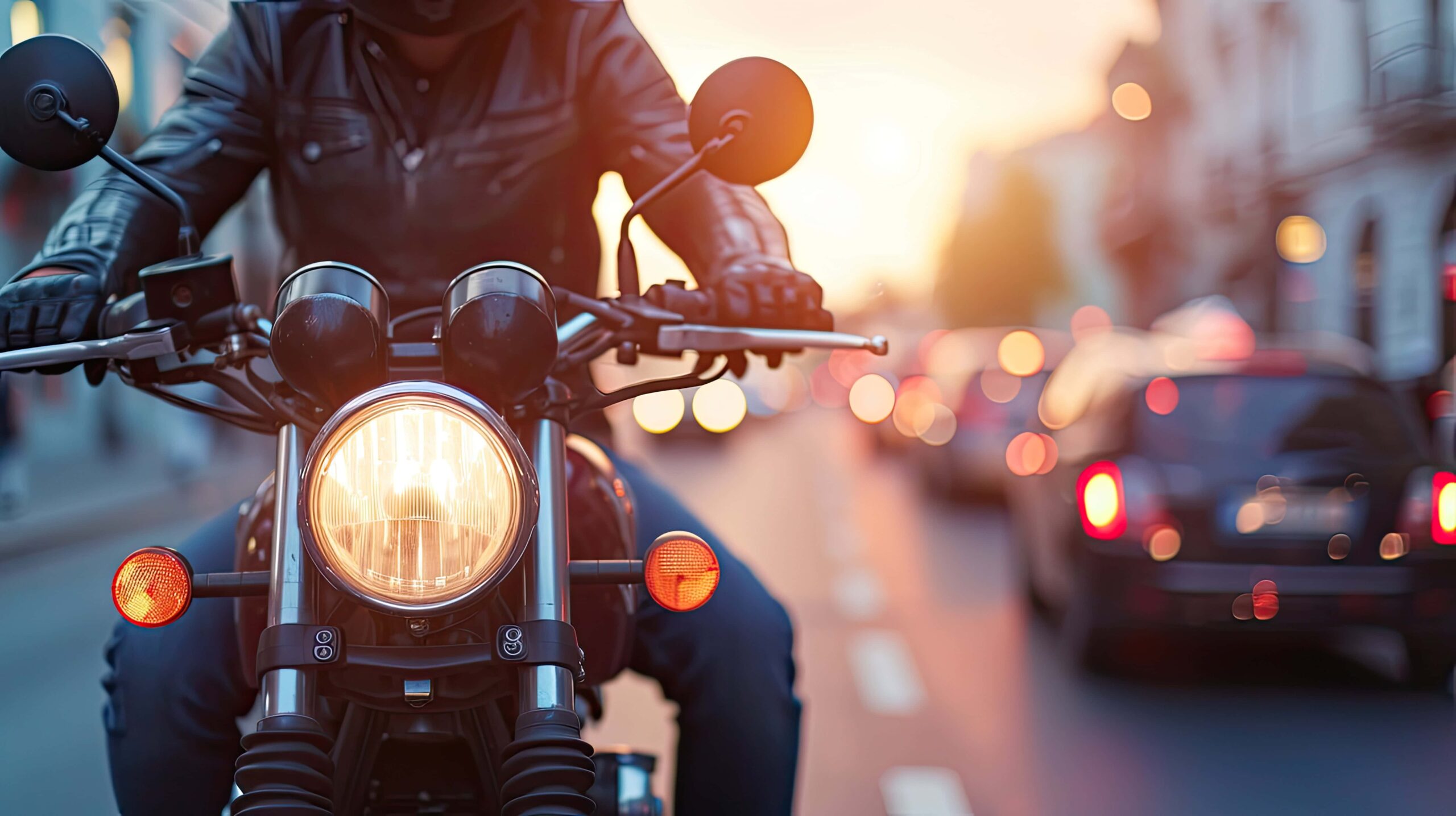Knowing motorcycle laws is important because motorcycle accidents remain far too common in Ohio. The fact is that motorcyclists are not protected like drivers of cars. When an accident does occur, the consequences can be devastating.
Motorcycle crashes come with heightened risks. Therefore, it is imperative that motorcyclists know how to operate their bikes in a safe manner. Additionally, other drivers must be ready to share the road with motorcycles.
Ohio Motorcycle Licenses & Endorsements
To operate a motorcycle on public roads in Ohio, you must have a valid operator’s license. The Ohio Bureau of Motor Vehicles (BMV) states that a motorcyclist can either seek:
- A motorcycle license, which will only allow them to operate a bike; or
- A motorcycle endorsement, which extends their normal driving privileges to cover motorized bikes.

Motorcycle licenses and endorsements from any of the other 50 states (or DC) are valid in Ohio. To obtain an Ohio motorcycle license or endorsement, a rider will need to either pass a skills test or take an Ohio motorcycle training course.
General Rules of the Road for Motorcycles
In Ohio, motorcycles must follow the standard rules of the road. Ohio law treats motorcyclists similarly to full-sized automobiles, meaning bikers have much the same responsibilities as ordinary drivers. Of course, as a result, it also means that bikers have the same rights as drivers. Motorcyclists have every right control a full lane on the road, including on busy highways.
Lane Sharing is Legal
There are some Ohio highway rules and regulations that apply specifically to motorcycles. Section 4511.55 of the Ohio Revised Code states these rules. Ohio has made it clear that two motorcycles can ride side by side in the same lane. Motorcyclists do not have to do this, even if they are in large groups, but they have the legal right to ride side by side. Though, no more than two bikes can do so at a time.
Lane Splitting is Illegal
Ohio law prohibits lane splitting. Lane splitting refers to when motorcycles ride in the middle lane, between stalled or slow moving traffic. Ohio views lane splitting as an unsafe and unacceptable practice. A few states, such as California, allow lane splitting. For this reason, out-of-state bikers operating in Ohio need to be ready to follow the local rules.
Ohio Motorcycle Safety Regulations
Ohio also has enacted several different rules related to the safety of bikes themselves. They go beyond the regulations promoting safe driving and motorcycle operation. The motorcycle safety regulations fit into the following seven categories:
- Seats: All motorcycle seats, must meet the minimum Ohio safety standards. The motorcycle operator must have a proper seat. All passengers must have a well-installed, permanent seat.
- Helmets: As a general rule, motorcycle helmets are not required in Ohio. However, there are some minor exceptions. Under United States Department of Transportation (USDOT) regulations, all motorcyclists who meet certain characteristics must wear approved helmets. You must wear a motorcycle helmet if:
- You are in the first year of holding your motorcycle license; or
- You are under the age of 18.
Additionally, if the operator fits into either of these two categories, the passenger must wear a helmet.
- Speakers and ear plugs: Under Section 4511.84 of the Ohio Revised Code, motorcyclists cannot use earphones or earplugs. Though, motorcycles may use helmets equipped with speakers.
- Eye Protection: Motorcyclists must have valid eye protection. This protection can come in many different forms. First, bikers can wear an approved helmet. Second, they can install a windscreen on the front of the bike. Finally, a motorcyclist could satisfy this requirement by wearing some type of valid eye protection.
- Headlights and Mirrors: To operate their vehicles safely, bikers must have a clear view of the road. This requires headlights and mirrors. A motorcycle must have at least one rear view mirror installed on it that gives the rider a complete view of the road behind them. Additionally, bikes must have at least one working headlight.
- Turn signals and brake lights: Other motorists must be able to tell what a motorcycle is doing. Biker hand signals are not, by themselves, sufficient. Under current Ohio law, a motorcycle must have working turn signals and working brake lights. Otherwise, the rider cannot take the bike on public roads.
- Handlebars: Ohio has also enacted regulations that control a bike’s handlebars. The motorcycle may not have handlebars that rise higher than the shoulder of the seated biker.
For many different reasons, it is imperative that motorcyclists follow all bike safety regulations. First, the failure to do so puts the biker (and any passengers) at a tremendous safety risk. This needs to be avoided, as nothing should come before your health and safety. Second, if you caught violating any rules, you could be subject to a substantial fine. You may even have your motorcycle driving privileges suspended or revoked. Finally, in the event an accident does occur, an opposing insurance company may try to reduce the value of your personal injury claim on the grounds that your negligence contributed to your own injuries.
Request Your Free Initial Consultation Today
At Tittle & Perlmuter, our expert motorcycle accident lawyers have helped many injured victims recover fair compensation. For immediate assistance with your claim, please call us today. We serve victims throughout Northeast Ohio, including in Parma, North Olmstead, and North Ridgeville.


